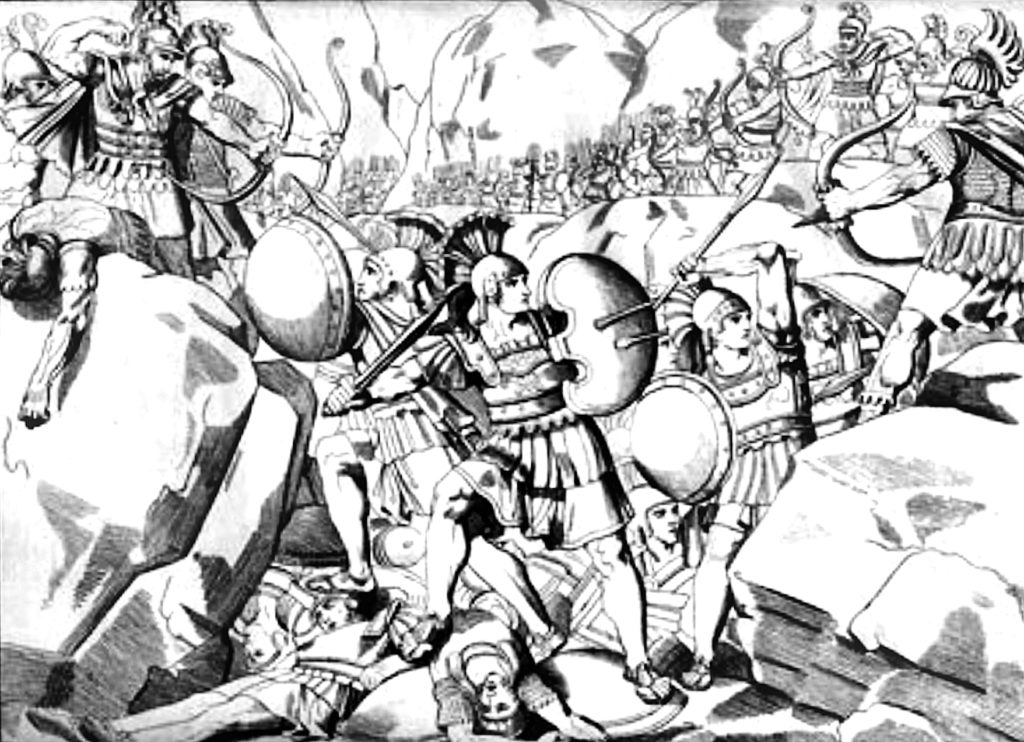Ariadne and Theseus are two key characters in the ancient Greek myth of the Minotaur.
Ariadne was a princess born on the island of Crete, home to the ancient Minoan civilization that flourished there during the Bronze Age. The modern name for the civilization derives from the mythical King Minos, the father of Ariadne.
The Minoan civilization produced complex cities and astonishing art over four thousand years ago, making it the first advanced civilization in Europe. They had two distinct writing systems, but neither one has ever been fully deciphered. Some of their art and coins depict labyrinths.
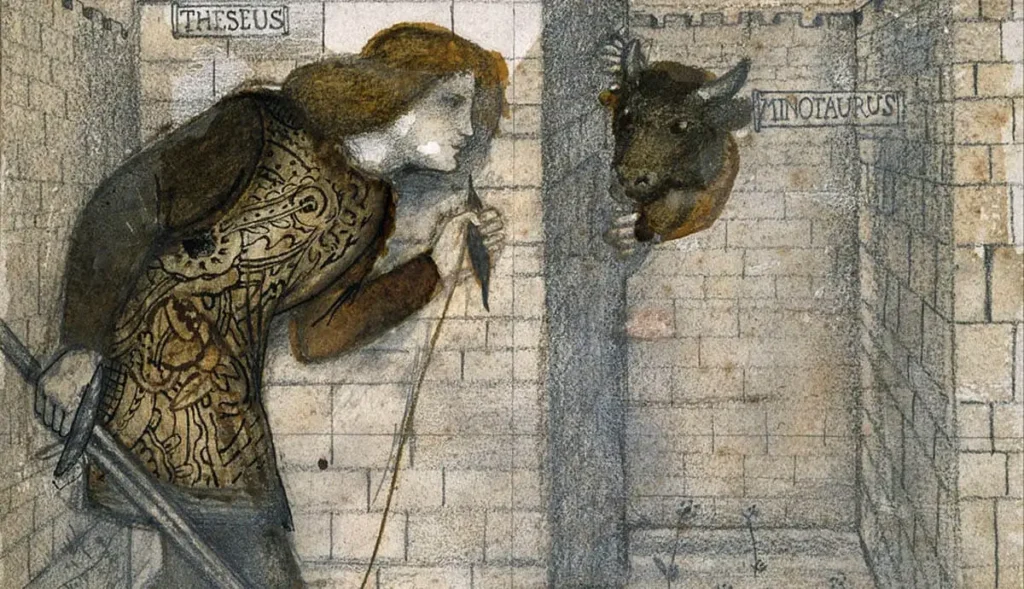
Minos and the Minotaur
King Minos appears in Greek literature beginning in the 8th century BC, with Homer’s Iliad and Odyssey. According to Thucydides, Minos was the first ruler to create a formal navy. Zeus himself instructed Minos on the laws that he created for his people.
Stories of Minos stretch across three generations. Some mythologists, such as Plutarch, surmised that there must have been at least two kings by this name.
The first King Minos, son of Zeus and Europa, was the good King Minos. He was so well respected by the Gods that after his death, he was appointed as one of the Judges of the Dead in the underworld.
The second King Minos was the grandson of the first. He and his wife Pasiphaë had eight children together, including the princess Ariadne. He had an additional eight children with other women and a nymph.
Pasiphaë was a demigoddess associated with witchcraft and sorcery. Her parents were the sun god Helios and the water nymph Perse.
When Minos’s father died, he competed with his two brothers for the kingship of Crete. He prayed to Poseidon to send him a sign of his favor, and the god sent a white bull from the sea.
Minos was supposed to sacrifice the bull, thereby giving him back to the god. But it was such a fine animal that he sacrificed another bull instead.
As punishment, Poseidon made Pasiphaë fall in love with the bull. She conceived a son and gave birth to Asterius, a child with a human body and the head of a bull, who grew into the Minotaur. Minos imprisoned the unfortunate creature in a labyrinth created for that purpose.
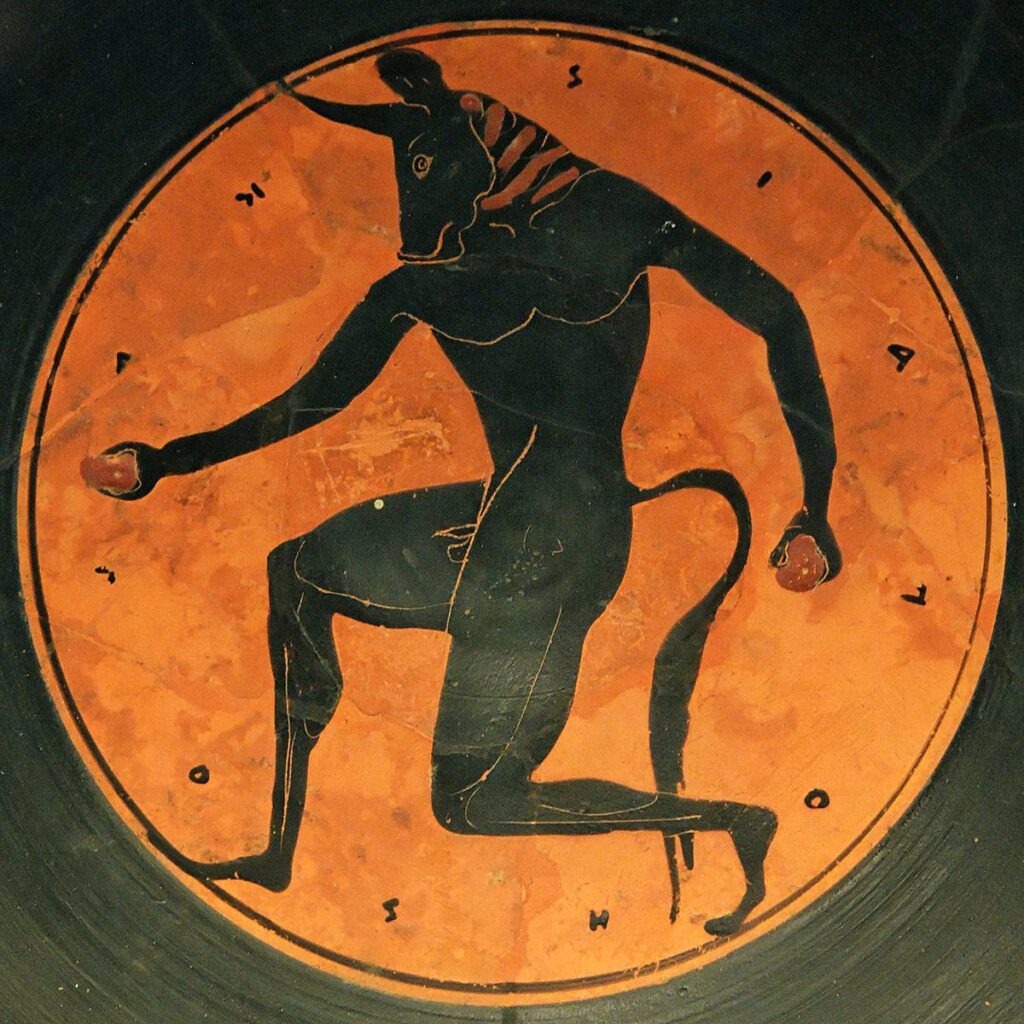
Theseus
Theseus was a mythical king of Athens. He was the heir of King Aegeus, though some of the old stories say that Theseus’s father was the god Poseidon.
When Theseus was still the prince and heir apparent, Ariadne’s brother died in Athens. In some versions of the story, he was murdered by rivals after winning an athletic competition. In others, he was killed by the bull that fathered the Minotaur after King Aegeus ordered him to slay it.
King Minos threatened to send his navy across the sea to avenge his death. Zeus aided him, attacking the city with plague and hunger. The king of Athens surrendered and offered his people up to the mercy of the Cretian king.
Minos demanded tribute in retribution. Every nine years (or every seven years, or every year – stories vary), Athens must send its seven most courageous young men and the seven most beautiful maidens on a ship to Crete to be devoured by the Minotaur.
Some accounts said that victims would be drawn by lots, Hunger Games style. Each time, they would get lost in the labyrinth and starve, or else be devoured by the Minotaur.
Theseus volunteered to go as tribute so that he could slay the Minotaur and save his peers.
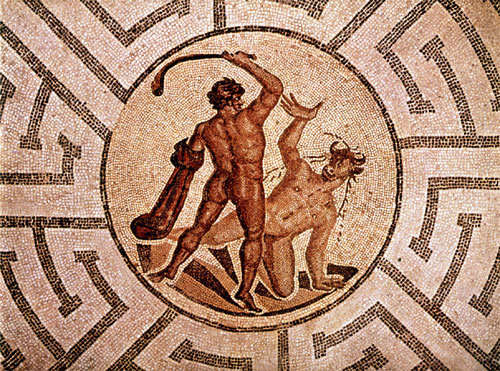
Ariadne
Ariadne was one of the daughters of King Minos.
In some versions of the myth, she was in charge of the labyrinth where the Minotaur was contained and the unfortunate Athenians were sent for sacrifice. In others, she was an innocent bystander forced to watch her half-brother devour these innocent youths year after year.
In the old stories, she fell in love with Theseus at first sight. She provided him with a sword and a ball of string so that he could slay her half-brother and find his way out again. She also told him how to navigate the labyrinth.
After Theseus killed the Minotaur and emerged victorious from the labyrinth, Ariadne stole away with him in the night along with her sister Phaedra. On the journey back to Athens, Theseus abandoned Ariadne on the island of Nexos.
In some versions of the story, a god or goddess murdered her there. In others, Theseus snuck away while she slept and married her sister instead.
The marriage of Theseus and Phaedra was as torrid and tragic as any Greek myth. In this one, she became romantically involved with her stepson and they both died because of it.
In some stories, Dionysus claimed Ariadne as his wife. Theseus was forced to leave her with the god who, by those accounts, was already her husband.
In Plutarch’s version, Theseus left the sleeping Ariadne behind by mistake. By the time he realized his error and returned, she had already fallen in love with Dionysus.
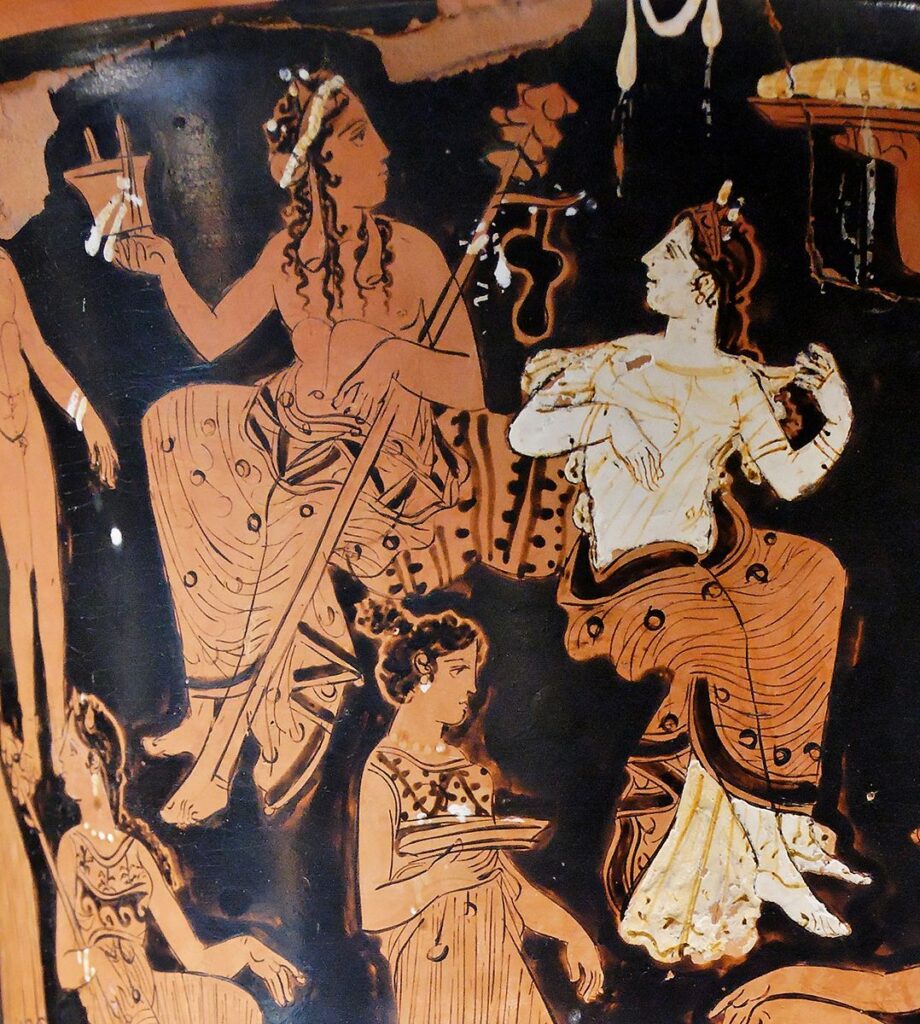
Dionysus and the Fate of Ariadne
Dionysus was a god associated with fruit, fermentation, festivities, and fertility. Worship of Dionysus revolved around wine and theater. He and Ariadne had many children together, including Thoas, Staphylus, and Oenopion.
In some traditions, Ariadne became a minor goddess associated with weaving – usually after meeting some tragic end or another, as so often happened to humans who got mixed up with gods. In many versions, Dionysus journeyed to the underworld and restored her to Mount Olympus after her death.
She was also known as the goddess of paths and labyrinths.
Little is known of ancient religious practices on the island of Crete, but some scholars believe that Ariadne originated as a major goddess in Minoan culture. The original labyrinth may have been an elaborate dancing ground used in religious rituals.
Other scholars believe that the character of Ariadne may have originated with a real woman who took part in ritual bull-leaping spectacles that were a part of Minoan culture.

